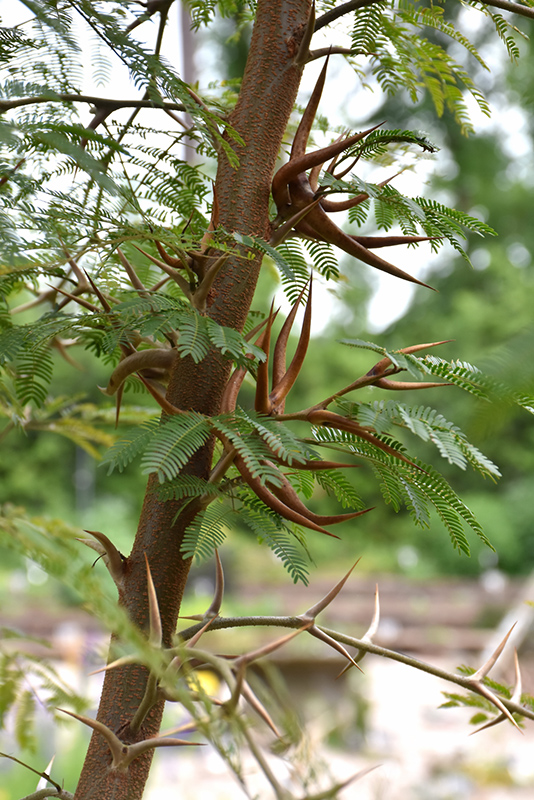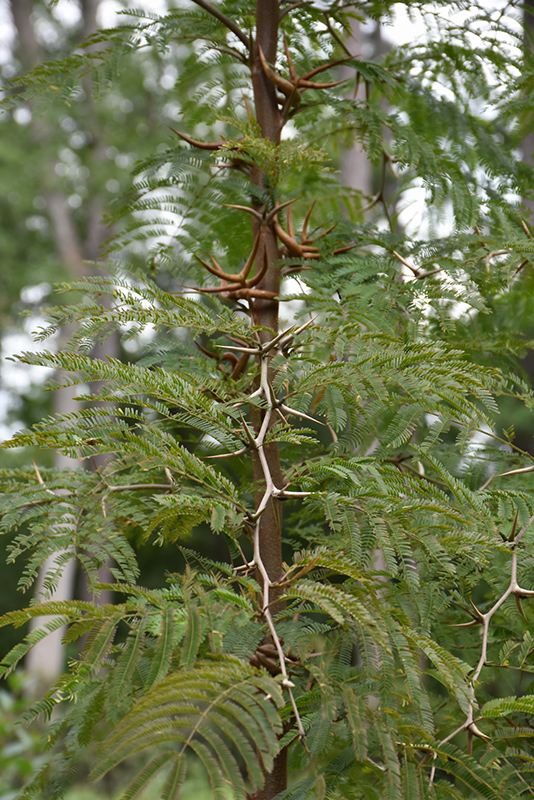Plant Finder
Height: 30 feet
Spread: 20 feet
Sunlight:
![]()
![]()
Hardiness Zone: 9a
Other Names: Bullhorn Wattle, Cachito, form. Acacia cornigera
Description:
This unique evergreen tree features gracefully arching branches and tiny, pinnate foliage; unusual, hollowed out thorns are home to a symbiotic ant species in its natural range; prefers fertile, well drained, sandy soils and full sun; drought tolerant
Ornamental Features
Bullhorn Acacia is primarily valued in the landscape for its ornamental upright and spreading habit of growth. It features subtle clusters of yellow ball-shaped flowers with gold overtones along the branches from late spring to early summer. It has attractive green evergreen foliage. The tiny narrow pinnately compound leaves are highly ornamental and remain green throughout the winter.
Landscape Attributes
Bullhorn Acacia is an open multi-stemmed evergreen tree with an upright spreading habit of growth. Its relatively fine texture sets it apart from other landscape plants with less refined foliage.
This is a relatively low maintenance tree, and should only be pruned after flowering to avoid removing any of the current season's flowers. Deer don't particularly care for this plant and will usually leave it alone in favor of tastier treats. Gardeners should be aware of the following characteristic(s) that may warrant special consideration;
- Insects
- Spiny
Bullhorn Acacia is recommended for the following landscape applications;
- Accent
- Shade
- Vertical Accent
- Hedges/Screening
- Windbreaks and Shelterbelts
Planting & Growing
Bullhorn Acacia will grow to be about 30 feet tall at maturity, with a spread of 20 feet. It has a low canopy with a typical clearance of 2 feet from the ground, and should not be planted underneath power lines. It grows at a medium rate, and under ideal conditions can be expected to live for approximately 30 years.
This tree does best in full sun to partial shade. It is quite adaptable, prefering to grow in average to wet conditions, and will even tolerate some standing water. It is not particular as to soil type or pH. It is somewhat tolerant of urban pollution. This species is not originally from North America..





